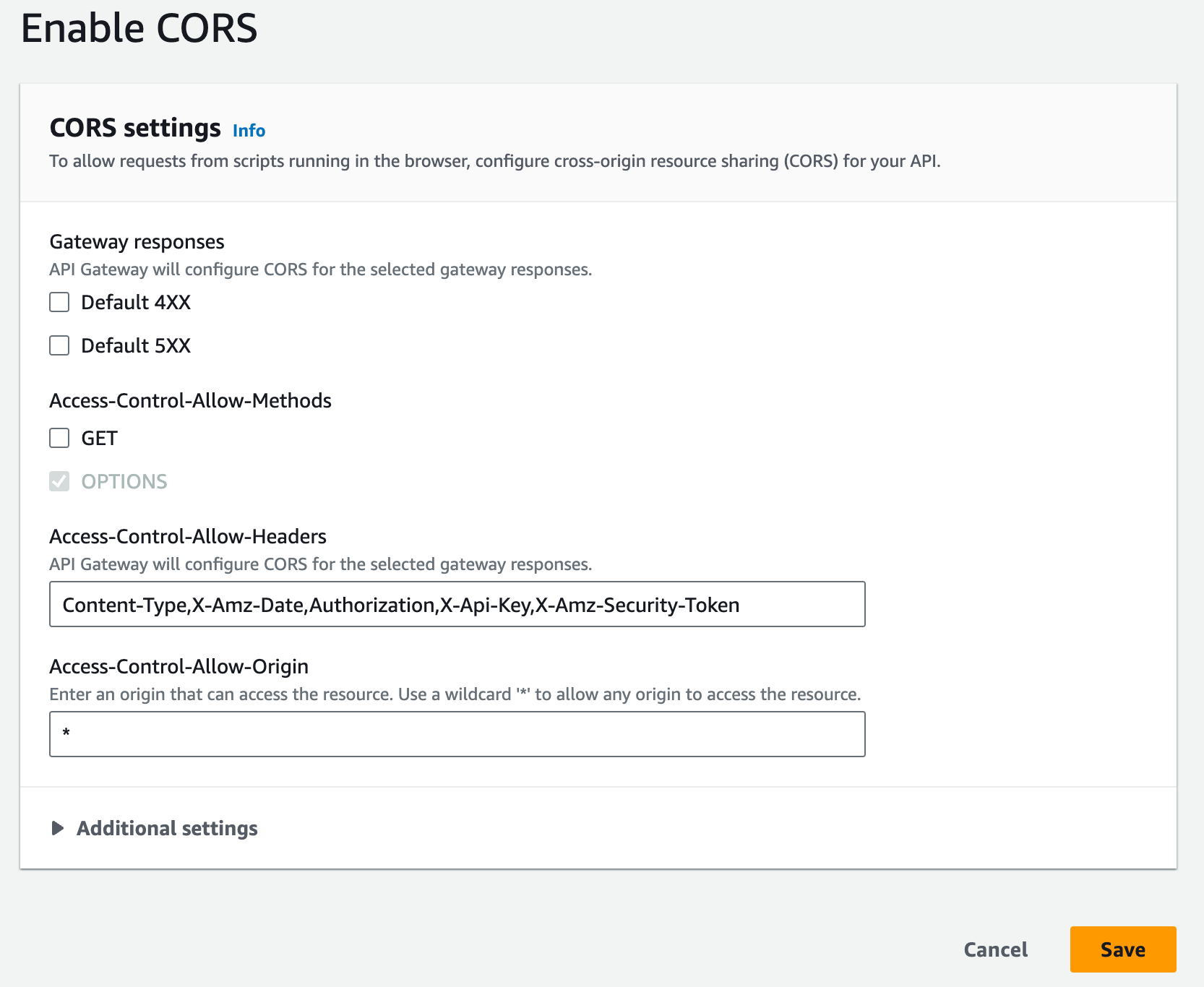Enable CORS on a resource using the API Gateway console
You can use the API Gateway console to enable CORS support for one or all methods on a REST
API resource that you have created. After you enable COR support, set the integration passthrough behavior to NEVER. In this case, the method request of an
unmapped content type will be rejected with an HTTP 415 Unsupported Media Type response. For more information, see
Method request behavior for payloads without mapping
templates for REST APIs in API Gateway
Important
Resources can contain child resources. Enabling CORS support for a resource and its methods does not recursively enable it for child resources and their methods.
To enable CORS support on a REST API resource
Sign in to the API Gateway console at https://console.aws.amazon.com/apigateway
. -
Choose an API.
-
Choose a resource under Resources.
-
In the Resource details section, choose Enable CORS.

-
In the Enable CORS box, do the following:
-
(Optional) If you created a custom gateway response and want to enable CORS support for a response, select a gateway response.
-
Select each method to enable CORS support. The
OPTIONmethod must have CORS enabled.If you enable CORS support for an
ANYmethod, CORS is enabled for all methods. -
In the Access-Control-Allow-Headers input field, enter a static string of a comma-separated list of headers that the client must submit in the actual request of the resource. Use the console-provided header list of
'Content-Type,X-Amz-Date,Authorization,X-Api-Key,X-Amz-Security-Token'or specify your own headers. -
Use the console-provided value of
'*'as the Access-Control-Allow-Origin header value to allow access requests from all origins, or specify an origin to be permitted to access the resource. -
Choose Save.

Important
When applying the above instructions to the
ANYmethod in a proxy integration, any applicable CORS headers will not be set. Instead, your backend must return the applicable CORS headers, such asAccess-Control-Allow-Origin. -
After CORS is enabled on the GET method, an OPTIONS method
is added to the resource, if it is not already there. The 200 response of
the OPTIONS method is automatically configured to return the three
Access-Control-Allow-* headers to fulfill preflight handshakes. In
addition, the actual (GET) method is also configured by default to return
the Access-Control-Allow-Origin header in its 200 response as well. For
other types of responses, you will need to manually configure them to return
Access-Control-Allow-Origin' header with '*' or specific origins, if
you do not want to return the Cross-origin access error.
After you enable CORS support on your resource, you must deploy or redeploy the API for the new settings to take effect. For more information, see Create a deployment.
Note
If you cannot enable CORS support on your resource after following the procedure, we recommend that you compare your CORS configuration to the
example API /pets resource. To learn how to create the example API, see Tutorial: Create a REST API by importing an
example.